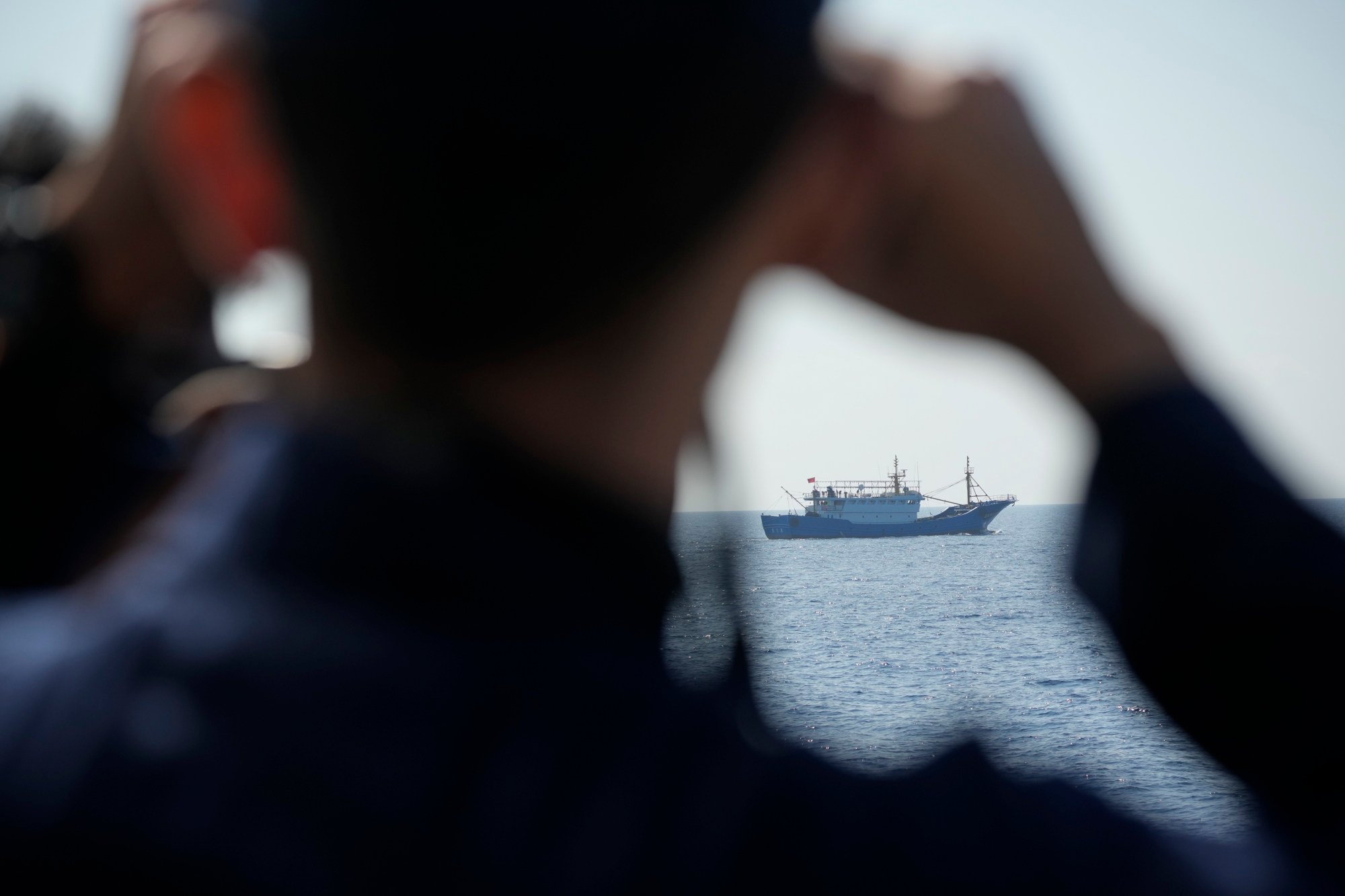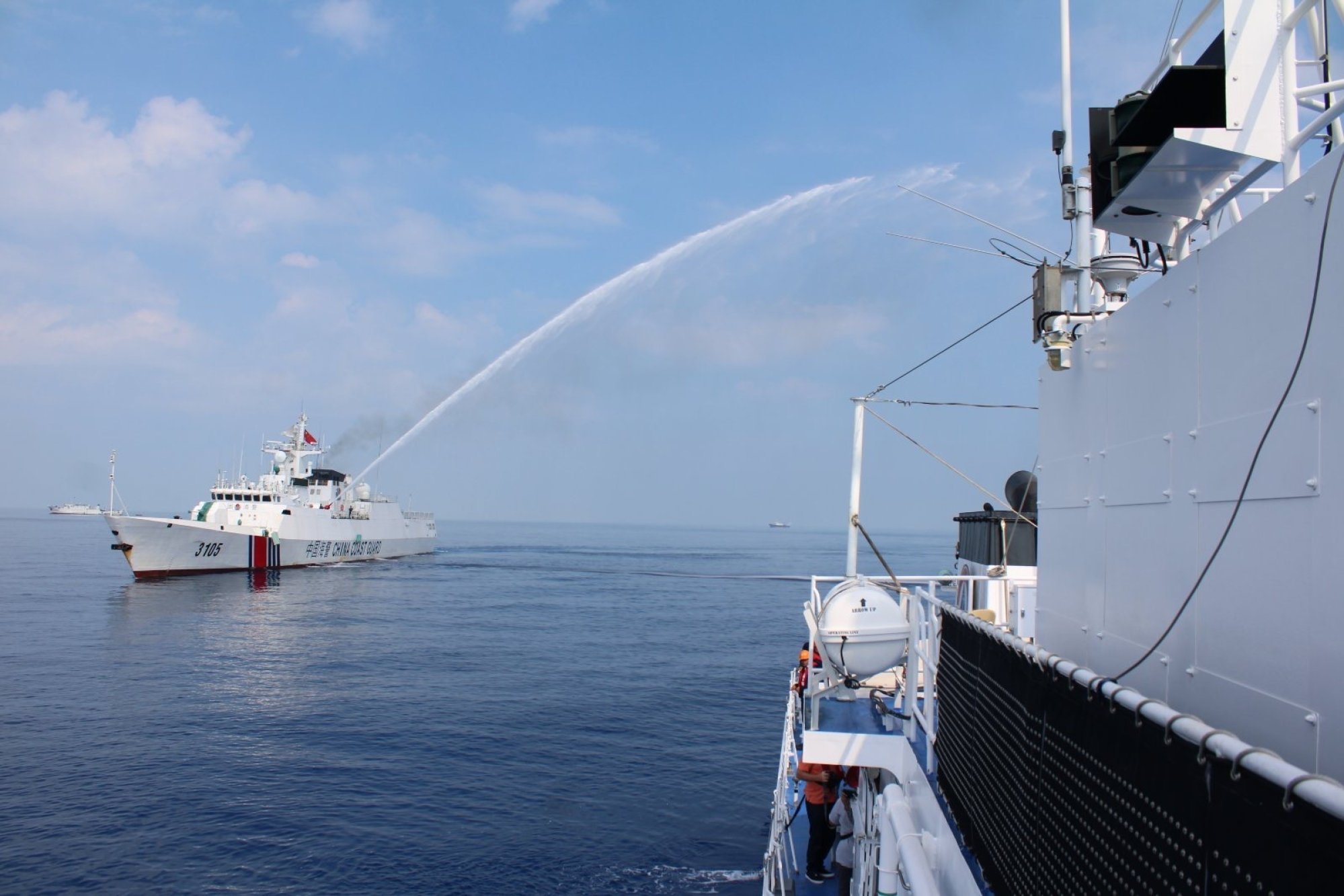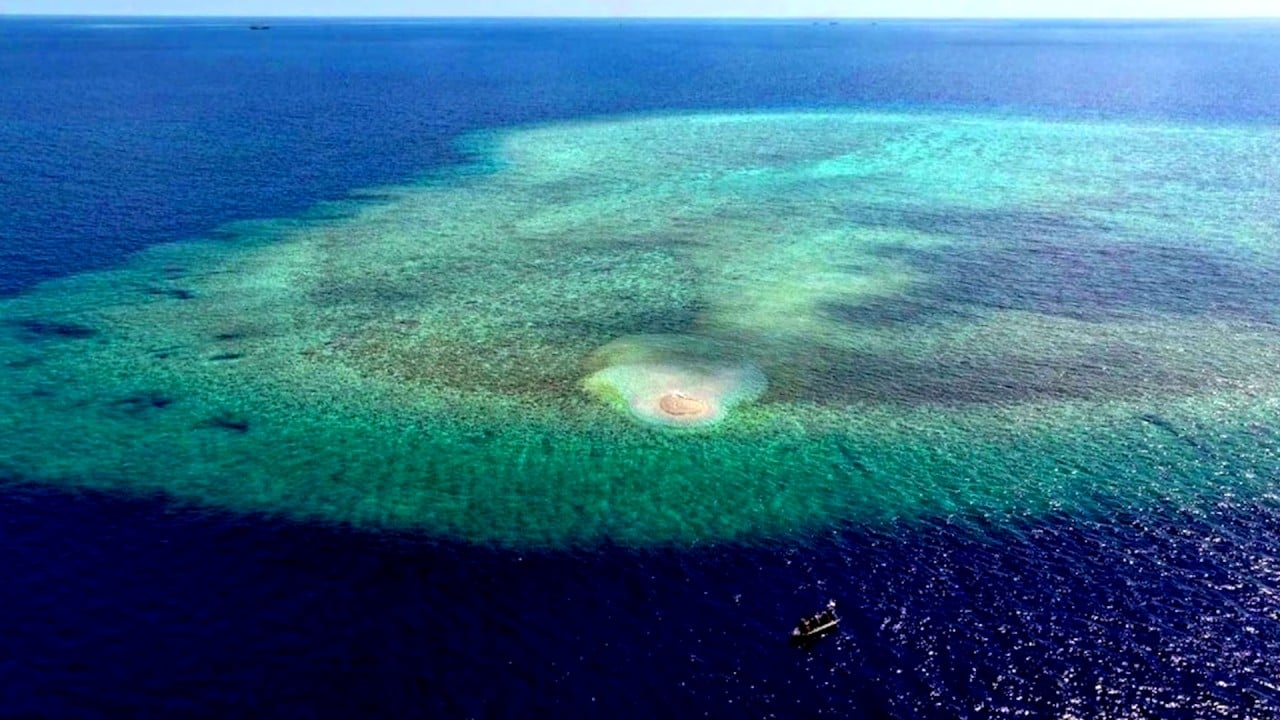“It’s sad that we are in our own country, in Philippine territory, and then we are told to leave because it’s supposedly China’s territory. It’s really shocking, alarming, and enraging,” Senate President Juan Miguel Zubiri told reporters.
“What I wanted to say is that, if they are listening, this is the territory of the Republic of the Philippines. This is not yours. This has been ours even before Ferdinand Magellan discovered the Philippines. So, get out,” Zubiri added.

The lawmakers were on Pag-asa to inaugurate the construction of new barracks and other facilities on the island meant to enhance the Philippines’ military and logistical capabilities on the island.
The island lies about 300 miles (483km) from Puerto Princesa in Palawan, a province facing the West Philippine Sea (WPS) – Manila’s name for part of the disputed South China Sea within its exclusive economic zone.
“We’ve seen several Chinese ships there, and Subi Reef is very close, which they have already occupied and equipped with naval facilities and facilities for war. It’s alarming,” Zubiri said.
Senator JV Ejercito echoed Zubiri’s concerns, noting that the proximity of Chinese militia vessels and their coastguard to the island was very alarming. Defence Secretary Gilberto Teodoro Jnr, who accompanied the senators, said 22 Chinese vessels were sighted just an hour away from Pag-asa.
While he does not foresee China attacking, Teodoro said Manila already has a contingency plan. “No right-thinking nation will attack civilians. Their noses will bleed if they try,” he told reporters.

In addition to military barracks, the central government will construct a health facility equipped with a laboratory and birthing facilities, which the lawmakers said would help deter China’s “illegal incursions”.
“Our investment in infrastructure projects on Pag-asa Island and in Kalayaan is an investment in our security in the West Philippine Sea,” Zubiri said. “It will show China and the rest of the world that we have a thriving community in Kalayaan and that we have a functioning military unit ready to support our patrols in our territory and exclusive economic zone,” he stressed.
Joshua Espena, a resident fellow and vice-president of the International Development and Security Cooperation think tank, told This Week in Asia that the infrastructure projects would provide the Philippines with better access to the area’s natural resources and give logistical advantages to the Philippine coastguard and Philippine navy as they increase their presence in the disputed waters.
“This is a way to counter China’s anti-access and area denial capabilities, which have long hindered Manila from tapping key fishing and energy sources and fully developing Pag-asa Island as a recognised territory of the Kalayaan municipality of Palawan. If successful, we are looking at Manila’s future ability to establish a ‘security box’ and deny it to others,” Espena said.
A security box, according to Espena, would allow the Philippine coastguard to ward off maritime militia harassment, enabling residents and fishers to conduct business as usual.
“But this will not be easy. The coastguard and navy must continually fend these off at a high operational tempo, necessitating these infrastructure developments,” he stressed.
When asked how long it would take for reinforcements to arrive and evacuate civilians from the island if a worst-case scenario occurred, Espena said it would take around three days.
“But with these developments, we could reduce it to about one to two days. That is why a high operational tempo is required by establishing the security box. We need to keep training and mobilising Philippine security forces,” Espena said.
Don McLain Gill, a geopolitical analyst and lecturer at the Department of International Studies of De La Salle University, said the military barracks and other structures under construction also plays a crucial role in the social development for the 400 or so residents of Pag-asa.
“Manila should continue to prioritise development projects on its inhabited islands in the WPS to ensure a thriving society, which will complement Manila’s people-centric WPS strategy,” Gill told This Week in Asia.
“However, such developments will irk China, which seeks to use these spaces as a launch pad for its power projection. Therefore, by investing in the people, the Philippines will strengthen its position in its waters in a benign way, making it difficult for China to provoke directly given the strategic risks,” he added.
The Philippines, China, Malaysia, Brunei, and Vietnam have competing claims in the South China Sea.
In 2016, the Permanent Court of Arbitration at The Hague upheld the boundaries of the exclusive economic zone claimed by Manila, which includes Pag-asa island, and dismissed China’s historical claims to the South China Sea as delineated on Chinese maps. China rejected the ruling, insisting it has jurisdiction over everything within its so-called nine-dash line.


